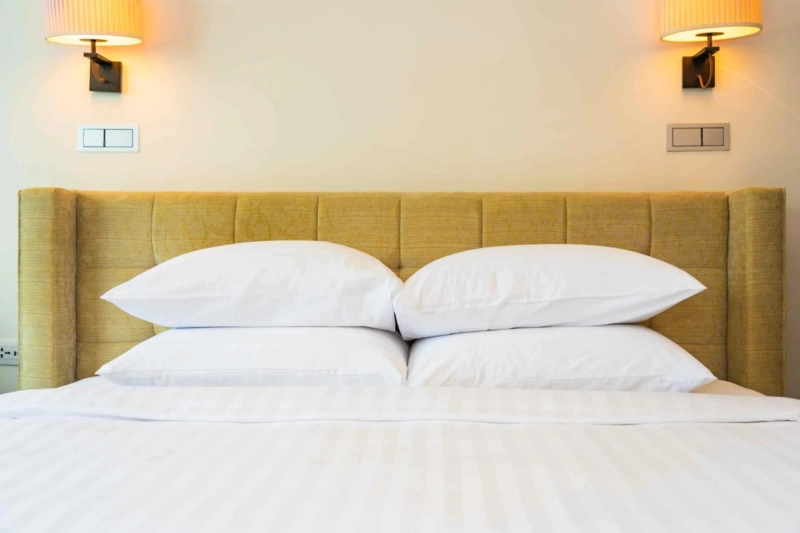The choice between disposable and reusable mattress protector has significant environmental implications. As consumers become more conscious of their environmental footprint, understanding these impacts can guide more sustainable decisions. This article explores the environmental ramifications of both options, considering factors like waste production, resource consumption, and overall sustainability. Additionally, we\'ll touch on the role of bed headboards in bedroom sustainability.
Understanding Mattress Protectors
What are Mattress Protectors?
Mattress protectors serve as a barrier to keep mattresses clean, extending their lifespan by protecting against spills, stains, allergens, and dust mites. They come in various forms, primarily disposable and reusable.
Types of Mattress Protectors
- Disposable Mattress Protectors: These are single-use, designed to be discarded after a short period or when soiled. They are often made of plastic or synthetic materials.
- Reusable Mattress Protectors: These can be washed and reused multiple times. They are typically made from durable materials like cotton, polyester, or a blend of natural and synthetic fibers.
The Environmental Impact of Disposable Mattress Protectors
Waste Production
Disposable mattress protectors contribute significantly to landfill waste. Each protector used is one more item added to the already overwhelming volume of non-biodegradable waste. This issue is exacerbated by the frequency with which these protectors need to be replaced.
Resource Consumption
The production of disposable protectors requires substantial resources. The manufacturing process involves the extraction of raw materials, energy consumption, and the use of chemicals, contributing to environmental degradation and pollution.
Carbon Footprint
The carbon footprint of disposable mattress protectors is considerable. The entire lifecycle—from production and packaging to transportation and disposal—releases a significant amount of carbon dioxide into the atmosphere, contributing to climate change.
The Environmental Impact of Reusable Mattress Protectors
Longevity and Durability
Reusable mattress protectors are designed for long-term use, significantly reducing waste. A single reusable protector can replace dozens of disposable ones over its lifespan, resulting in less waste generation.
Resource Efficiency
While the initial production of reusable protectors may require more resources compared to a single disposable protector, their extended use compensates for this. Over time, the overall resource consumption is lower due to fewer replacements needed.
Carbon Footprint
The carbon footprint of reusable mattress protectors is generally lower when considering their extended usability. Although the initial production might be more resource-intensive, the reduced frequency of manufacturing and disposal leads to lower overall emissions.
Comparing Waste Management and Sustainability
Waste Disposal Challenges
- Disposable Protectors: These create immediate waste disposal challenges. Given their short lifespan, they quickly accumulate in landfills, adding to the growing problem of plastic and synthetic waste.
- Reusable Protectors: These mitigate waste disposal issues by reducing the frequency of disposal. Their durability and longevity mean fewer items end up in landfills over time.
Recycling and Decomposition
- Disposable Protectors: Often made from materials that are difficult to recycle and decompose, they remain in the environment for extended periods, contributing to long-term pollution.
- Reusable Protectors: While not all reusable protectors are biodegradable, many are made from materials that can be more easily recycled or have a lesser environmental impact upon disposal.
The Role of Bed Headboards in Bedroom Sustainability
Material Choices
Bed headboards, often overlooked in sustainability discussions, also play a role. The materials used for headboards can impact the overall environmental footprint of a bedroom setup. Opting for headboards made from sustainable materials like reclaimed wood or eco-friendly fabrics can complement the use of reusable mattress protectors.
Production and Lifespan
Similar to mattress protectors, the production and lifespan of bed headboards matter. Headboards made from durable, sustainably sourced materials can last longer and reduce the need for frequent replacements, thereby minimizing environmental impact.
Design and Multifunctionality
Innovative designs that incorporate storage or other functionalities can make headboards more sustainable. By serving multiple purposes, these headboards reduce the need for additional furniture, thereby saving resources and reducing waste.
Making Sustainable Choices
Evaluating Needs and Preferences
When deciding between disposable and reusable mattress protectors, consumers should evaluate their specific needs and preferences. For example, while disposable protectors might be convenient for temporary use, reusable protectors are more suited for long-term environmental sustainability.
Considering Health and Hygiene
Both types of protectors have health and hygiene benefits, such as reducing allergens and protecting against spills. However, reusable protectors often offer better long-term protection due to their durability and washability.
Cost Implications
While reusable mattress protectors may have a higher upfront cost, they can be more economical over time due to their longevity. In contrast, disposable protectors, though cheaper initially, may incur higher costs in the long run due to frequent replacements.
Conclusion
The environmental impact of disposable versus reusable mattress protectors is clear: reusable protectors offer significant sustainability benefits by reducing waste, conserving resources, and lowering carbon footprints. When combined with sustainable choices for bed headboards, these decisions contribute to a more eco-friendly bedroom setup. As consumers become more eco-conscious, opting for reusable options wherever possible is a crucial step towards reducing our overall environmental impact.
By understanding the environmental consequences of our choices and prioritizing sustainability in everyday products, we can make a meaningful difference. Sustainable living begins with informed decisions, and choosing reusable mattress protectors and sustainable bed headboard is a step in the right direction.


